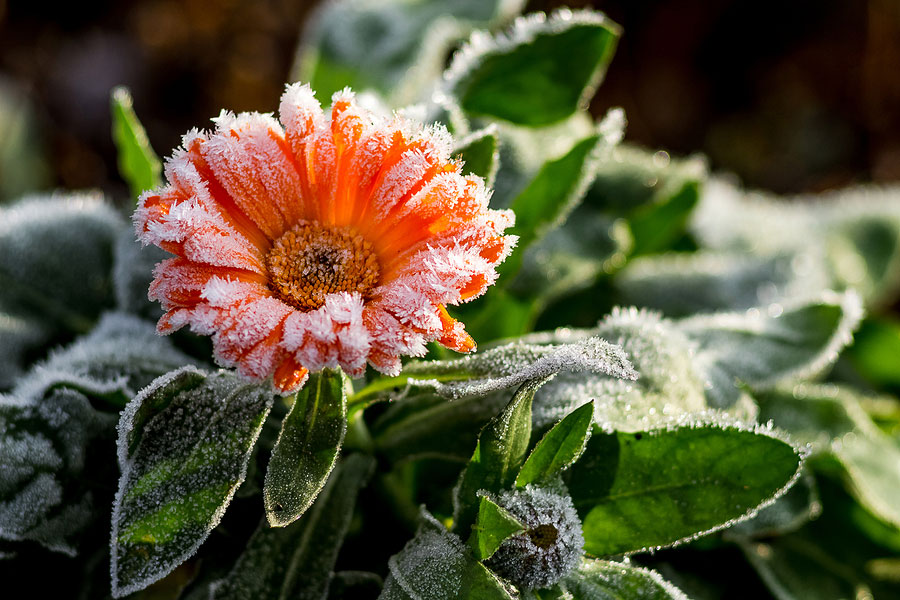Winter can be tough on your outside plants, even in the mild climate of the Carolinas. Take a slow and thoughtful stroll through your landscape, garden, or greenspace; look for damage, decline, and dead-heads that could indicate exposure to chillier temperatures.
Are your outside plants looking a little sad after a cold snap?
Be patient.
When perusing your plants, resist the urge to pluck, fix, or prune brown spots that you find on your green plants, shrubs, or trees. Instead, wait until spring, early April, and fertilize liberally. When you notice fresh growth, then you can give them a light pruning to get rid of dead or brown branches.
Warm them up.
Camellia is popular in the Carolinas, but cold weather may cause the buds to drop and die before blooming. The best way to prevent this is to keep your Camellias warm by covering with a blanket and string-lights to provide warmth during the coldest days of winter.
Look later on.
When plants are damaged by a cold snap, it may not always be obvious; sometimes, damage manifests much later, like in the springtime. Some plants that conceal cold-weather damage until warm weather arrives are azaleas, gardenias, and holly.
Inspect the bark.
A good way to determine if your plant or tree is being impacted by the cold is to inspect the bark: do you see splits or cracks along the surface? If the branches are turning yellow, check the bark along the discolored branches. Splits and cracks are typically due to the sap freezing, which means your plant got too cold.
Use an ounce of prevention.
You may be able to save and revive a plant that has been damaged by a cold snap, but know that it is easier to prevent this damage from happening in the first place. If you expect colder-than-normal temperatures or the first frost, protect your young and vulnerable plants with cover. Use linens, burlap, or gardening fabric to insulate them until it warms up. Remove the material when the sun rises to provide them the opportunity to garner the natural light.
Know your zone.
It is of absolute importance that you know the hardiness zone that you live in; this determines the best plants for your region, as well as when to plant for optimal growth and hardiness. Do you know what zone you live in? This will pinpoint which plants will survive when the temperatures dip as well as which species thrive in the South Carolinian climate.
Concerned that a cold snap is damaging your outdoor plants? Use these tips to protect and preserve your plants, trees, and yard this winter. For professional landscaping assistance, contact Terra Bella Garden Center, a Local Garden & Landscape Design Center in Charleston and revive your greenspace.


